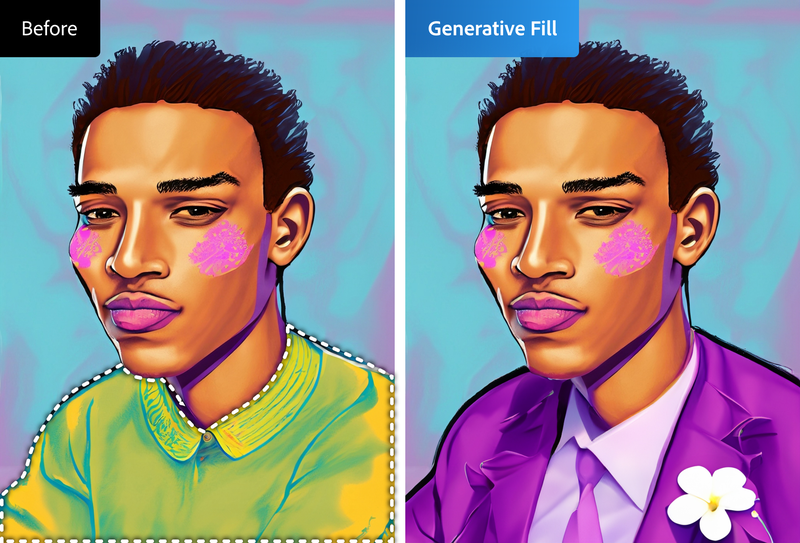Two of the most popular image editing tools available, Adobe Photoshop and Illustrator, are being reshaped to focus on generative AI. As of Wednesday morning, all Adobe Firefly AI tools are available to all subscribers, allowing users to create the deepfakes they always wanted to without messing about with finnicky filters or brush tools.
Adobe announced Wednesday that its large family of AI applications across its creative suite, dubbed Firefly, is out of its six-month beta and is available in the company’s Creative Cloud apps. This includes an AI art generator, a generative fill tool that can artificially expand the borders of an image by creating out-of-frame content, as well as AI-based colour correction. Lightroom is receiving AI storyboarding and animated text, while In Illustrator, there’s a new Generative Recolor function that can modify existing images’ color motifs. The company’s all-in-one free tool, Adobe Express, is receiving your basic text-to-image generative AI. There’s also an AI chatbot interface “co-pilot” that uses text prompts to modify the images, without users necessarily needing to take direct control.
Firefly is being integrated into Adobe Express and the Creative Cloud app. The web-based Firefly app is also coming out of beta. Most importantly, each customer is being granted a number of “Generative Credits” as part of their plans. The Firefly web app, Express Premium, and Creative Cloud paid subscriptions are allotted a number of credits for generating content based on the text-based prompts.

Most online AI art generators, especially the ones that tout “free” services, use a credit system to limit the number of images each individual user can create. Adobe’s Creative Cloud already costs $US55 a month if you want access to all the company’s apps, while a single Photoshop subscription will run users $US21 a month. According to Adobe’s billing page, Photoshop users receive 500 credits a month, while Creative Cloud subscribers get 1,000. Users can also pay for $US5 a month for Adobe Firefly only, which grants them a bare 100 monthly credits.
One of the biggest considerations with AI image generators is the training data used to help create the content. Adobe is still touting that, unlike the major hitters like OpenAI’s DALL-E 2, Midjourney, or Stability XL, its text-to-image AI is only using images from its own Adobe Stock service. As far as compensating all those creators it’s openly borrowing from, Adobe said that all Adobe Stock contributors who have content in the standard or premium collection will receive a once-a-year bonus that’s dependent on the total number of approved images and assets. The company did not reveal how much this bonus is worth. We reached out to Adobe for clarification, and we’ll update this piece if we hear more.
The company is also claiming it has its own system for labeling what work was created or modified by AI. This so-called “Nutrition Label” automatically applies to AI content’s metadata when it’s created through Adobe’s software suite. The Content Authenticity Initiative label includes the assets name, creation data, and tools used to make it. It’s powered through an open-source tool, and Adobe promised that “this data remains associated with content wherever it is used, published or stored.” There’s also a verification website where users can upload files to look into their AI metadata.
This is very different than AI image watermarking, which processes an imperceptible imprint on the image’s pixels. Google has claimed it has a watermarking process that can’t be modified through filters or other image modification but has yet to explain how that works. Instead, Adobe’s label is a simple metadata tag.
The Content Authenticity Initiative is an industry association first founded by Adobe, The New York Times, and Twitter. Though the metadata sticks on the image once it’s created, it’s very easy to simply remove it. The CAI admits this in its FAQ page, though the association said users may be able to search the Verify site to find possible matches to the supposed modified image.
